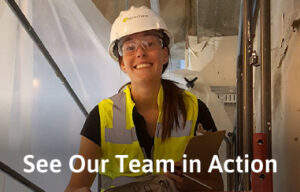News

“The Greenest Building Is The One Already Built”
October 28, 2021Some say, “you can’t make a silk purse out of a sow’s ear.” The idea is that it is not possible to turn something ugly or inferior into something attractive or of value. This expression harkens from the mid-1500s. Our recent experiences with outdated strip malls make us believe it is time to rethink it.
On many occasions a client has asked us to take a look at a building for sale that is a “real deal.” Many of these are older retail buildings that have been vacant for years. Condition surveys often reveal them to lack complete and reliable lateral force resisting systems and some older wood framed buildings are deteriorated as a result of water infiltration.
Fortunately, many clients remain undaunted by the challenge, and are even invigorated by it. Because these buildings are often near community centers, “location, location, location” still holds true. If the goal is to locate a building close to lots of parking and near the people you want to serve, there is real potential in these tarnished gems. As healthcare becomes more decentralized, older retail buildings are increasingly attractive as medical office buildings.
Estructure has helped repurpose several abandoned strip malls into modern medical offices. Each was gutted to create a clean slate. Seismic improvements were developed in tandem with architectural planning and were implemented early in the project. Since strip malls are generally wood framed, seismic improvements often involved the addition of plywood shear walls or braced frames, strengthening or adding connections, and reinforcing roof diaphragms. Additional structural improvements were implemented for new mechanical, electrical and plumbing systems and for specialized medical equipment in procedure rooms. In some cases, exterior improvements included new canopies and updated cladding elements. And in each case, architectural enhancements created state-of-the-art medical practices and inviting spaces.
These projects require creative solutions coupled with an attitude of making the best of what you’ve been given. “The greenest building is the one already built” according to Carl Elefante, FAIA, Principal Emeritus with Quinn Evans. At Estructure we welcome the opportunity to contribute to a more sustainable community by upcycling existing buildings.
John Muir Health has recently undertaken renovations of several vacant retail spaces. “We look for opportunities to serve our communities in the most cost effective and sustainable ways. Reusing existing buildings, rather than demolishing and building new, is one of our most effective development strategies,” states Michael Monaldo, Vice President, Facilities Development & Corporate Real Estate at John Muir Health.
Here are photographs of some of our favorite makeovers!
John Muir Health, Pleasant Hill, CA – Before and after. Architect: Ratcliff Architecture


Kaiser Watsonville, CA – Before and after. Architect: Hawley Peterson Snyder


Stanford Healthcare, Emeryville, CA – Before and after. Architect: KMD Architects




